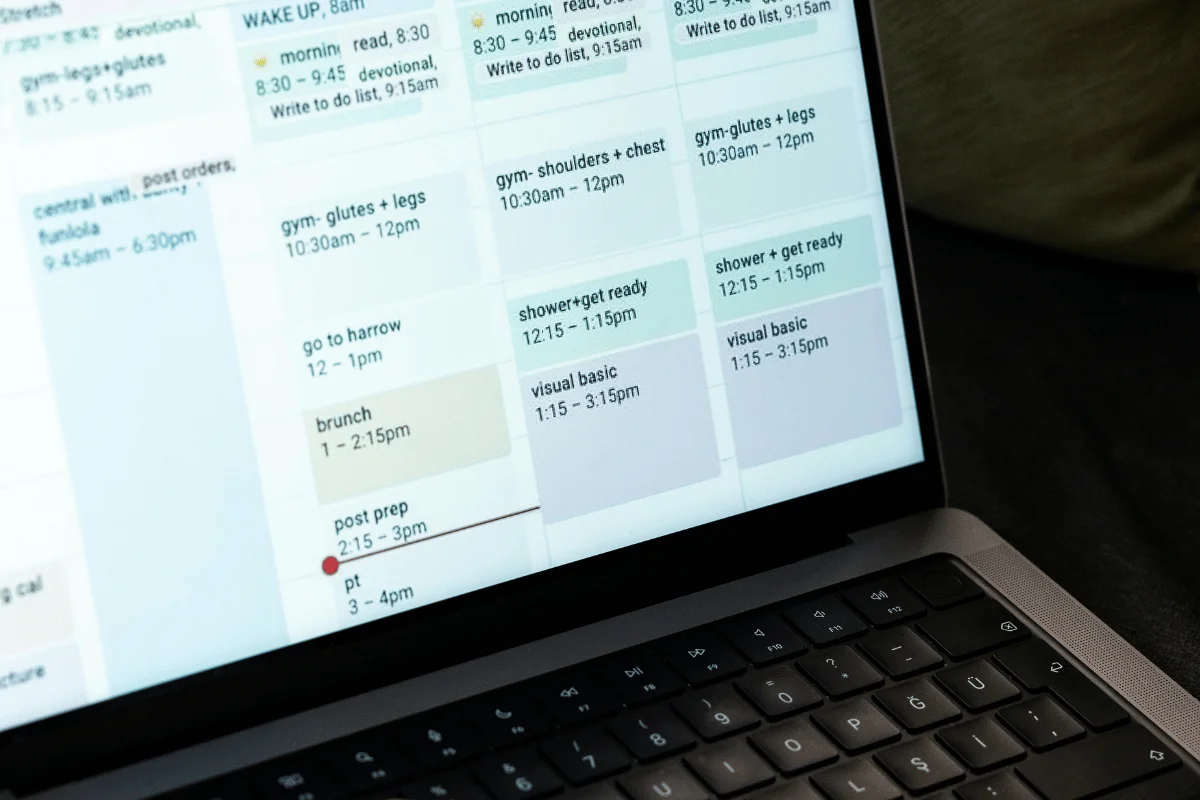Running a business means wearing many hats. Even with a great team around you, dozens of tasks still need your personal attention each day.
How you handle this daily juggle often decides whether your business thrives or struggles.
Maybe you’ve already tried the usual fixes—better time management, healthier routines, or a bit of meditation. All helpful stuff. But let’s face it—there are only so many hours in a day, and you’re just one person.
This is why you need an executive assistant.
Instead of doing everything yourself until you burn out, you can team up with someone (like a 2nd brain) who’s great at handling the tasks that bog you down.
But making this partnership work isn’t automatic. It takes some know-how to get it right!

TL;DR – How to Use an Executive Assistant
Here’s how to get started with your executive assistant:
- Determine your specific needs for assistant support
- Set up proper system access (email, calendar, contacts)
- Schedule dedicated onboarding meetings
- Create a comprehensive profile of your preferences and requirements
- Introduce your EA to key team members and stakeholders
- Establish clear communication protocols
- Build trust through gradual delegation
- Create feedback loops for continuous improvement
Do you want to implement these steps but are unsure where to start?
At ProAssisting, our ProAssistants bring at least 5 years of experience supporting high-level executives, board members, entrepreneurs, and business owners.
We handle the rigorous vetting process (only the top 5% of applicants get selected) so you can focus on growing your business.
Let’s discuss how a ProAssistant can help you regain 30% or more of your working hours!
Our plans start at $3,000 per month and include daily support with one-hour turnaround times during business hours plus after-hours availability when unexpected needs arise.

What is the Role of an Executive Assistant?
At its core, an executive assistant’s primary role is to give you back time—your most precious resource.
But describing an EA’s role as simply “giving back time” is like describing a smartphone as just “making calls.”
This is far more nuanced and powerful.
Modern executive assistants wear multiple hats, functioning as:
- Business Partners: They act as a sounding board, manage information flow, and represent you in various contexts.
- Chief of Staff: They serve as a single point of contact for communications and coordination between different stakeholders.
- Project Manager: They handle everything from planning company retreats to organizing office moves.
- Assistant/Scheduler: They manage your calendar, communications, and daily logistics.
- Personal Assistant: They handle both professional and personal tasks to increase your productivity and maximize your time efficiency.
A great EA becomes a true extension of you, anticipating needs and proactively solving problems before they arise.

Key Areas Where Executive Assistants Add Value
The modern workplace is overwhelming—according to this 2023 Microsoft report, 68% of people struggle to find uninterrupted focus time during their workday.
The average executive spends over half their time (57%) just communicating—that’s endless meetings, emails, and chat messages. Only 43% is spent on actual creative work—creating documents and crunching numbers.
What does that look like in “hours”?
Top executives spend nearly 9 hours weekly on email alone, with another 7.5 hours in meetings. That’s almost two full workdays lost just to managing communications!
This is exactly where executive assistants make a huge difference. Here are the key areas where they make the biggest impact:
- Calendar Management: Your EA becomes your time bodyguard. They ensure you meet the right people at the right time while keeping the time-wasters away. Need quiet time to focus? They’ll block it off when you’re at your best. Double-booked meetings? They’ll sort it out before you even notice.
- Inbox Management: With access to your inbox, your EA acts as a skilled filter. They ensure important communications reach you while shielding you from distractions. They handle routine correspondence and flag critical items that need your attention.
- Single Point of Contact: Your EA serves as a central hub for all communications, creating efficient channels between you and your stakeholders. This streamlined approach prevents information silos and ensures nothing falls through the cracks.
- Personal Support: Your EA handles both business and personal tasks seamlessly, from managing family schedules to coordinating personal appointments, ensuring all aspects of your life run smoothly. You just need to empower your executive assistant as a personal assistant.
- Efficient Communication: Once you and your EA get into a groove, magic happens. What used to take a long back-and-forth chat now becomes a quick “got it” moment. They learn how to transform a 12-minute conversation and 15-item to-do list down to two essential tasks that really matter.
Another area where EAs add a lot of value is professional networking.
Keeping up with your network often gets pushed to the bottom of your to-do list when you’re swamped with daily operations.
But here’s why that matters:
A LinkedIn study shows that 80% of executives say networking is crucial, and 70% landed roles where they had a connection.
Yet nearly half (49%) say they simply don’t have time for it!
Your EA can help maintain these valuable relationships by scheduling regular check-ins, sending thoughtful follow-ups, and keeping your network warm even when you’re too busy to do it yourself.

How to Use an Executive Assistant
Now, let’s walk through the step-by-step process of working with an executive assistant.
It all starts with understanding exactly what you need:
1. Determine Your Support Needs
Your first step is figuring out what kind of support will serve you best.
Do you need a full-time employee (either an administrative or an executive assistant), or would a fractional executive assistant work better?
Maybe a virtual assistant would be more suitable for your needs.
You’ll also need to decide between onshore and offshore options based on your requirements.
As Ethan Bull explained in a recent MSP Mindset podcast appearance, there is a wide spectrum of support options to consider—from $5/hour overseas virtual assistants to full-time executive assistants.
For higher-end fractional support like the one that our ProAssistant provides, Bull notes that “you really need to be doing north of $500,000 a year in Revenue to justify bringing on a $3,000 a month assistant.”
However, smaller businesses with more than $300,000 in revenue per year might still benefit from various levels of assistance depending on their specific needs and growth stage.
Take a close look at your daily tasks and think about:
- What activities consistently drain your time
- Where you’re becoming a bottleneck in your organization
- Which recurring tasks could be handled by someone else
- Both business and personal support needs
2. Set Up System Access
This is where trust becomes crucial.
You need to give your remote executive assistant access to your systems—it’s a leap of faith, but it’s where they’ll provide the most value.
Create their profile in your employee system and give them delegated access to:
- Your calendar
- Contact lists
- Email inbox (if you’re comfortable with this level of access)
- VIP and employee lists
- Client databases
Some situations, like board directors dealing with confidential information, require clear boundaries around system access.

3. Schedule Dedicated Onboarding
The process of onboarding an assistant starts with impactful one-hour meetings. It can accomplish more than you might expect.
These initial sessions help dramatically cut down the learning curve and get your EA up to speed quickly.
Create a timeline for your first few meetings and focus on:
- Share your work style—maybe you’re a morning person who loves early calls, or you need quiet time to focus after lunch. Let them know what makes you tick.
- Walk through basics—show them your daily routines and must-do tasks.
- Tell them about the important people in your world—who they are, what they do, and any helpful background that will make working with them easier.
- Talk about your expectations—be open about what you’re hoping to achieve together.
4. Build Your Personal Dossier
Help your EA create a detailed profile about you and your preferences.
This step saves countless hours of back-and-forth questions about booking flights, making reservations, or handling meeting requests.
Think of it as your personal operating manual.
Include information about:
- Travel preferences and loyalty programs
- Meeting and scheduling preferences
- Communication style and expectations
- Regular commitments and patterns
5. Introduce Your EA as a Partner
This step is super important—introduce your EA (whether that’s your part-time remote executive assistant or full-time) to your team, company, clients, and prospects as a true partner.
The amount of respect, praise, and partnership you express through those introductions can go a long way.
Make it clear that they should:
- Go to your EA first before coming to you
- Trust your EA’s questions and requests
- Treat your EA as your representative
Your EA should be positioned as “someone who can speak for you” so that a lot of questions that fill up your inbox and your text string are never going to get asked again.

6. Establish Communication Priorities
Create a clear hierarchy for communication.
For example:
- Phone calls are the top priority
- Voicemails come second
- Text messages are the third
- Emails can usually wait until the next business day
- An email followed by a text means the email is urgent
7. Build Trust Through Partnership
Remember, hiring an EA isn’t about creating another employee—it’s about finding a trusted partner.
Include them in context and information, even for things you might think they don’t need to know (unless it’s confidential).
The more context they have, the better they can support you.
In the MSP Mindset podcast, Ethan warns against viewing the relationship “in an adversarial light, trying to catch them in a mistake, trying to make sure you’re squeezing every single penny out of them.”
Instead, he emphasizes that “they’re a partner” and advises transferring some of your “leadership and voice to them in the eyes of your employees and your clients.“

Tips to Maximize the Strategic Impact of an Executive Assistant
Unlike in the past, when assistants primarily assisted with administrative tasks, modern EAs now impact company strategy by supporting their principals’ performance multipliers.
Let’s discuss some ways to utilize their skills to the fullest:
- Time Arbitrage: The highest ROI an executive can achieve by hiring an EA is reclaiming their time. Usually, executives spend hours on tasks like email correspondence and calendar management, which EAs can handle at a fraction of the cost. This enables the principal to focus on core business activities, such as meeting key stakeholders.
- Cultivating a Partnership Mindset: Empower your executive assistant to become a mini-principal, enabling them to function as an extension of you. This means they understand how you think and how you’d respond to specific scenarios, allowing them to operate independently, unless necessary.
- Make the EA Your Single Point of Contact: Introduce your EA to key stakeholders, including clients and vendors, so your assistant can take up the role of chief of staff. This way, all correspondence happens through your EA, who decides which issues need your attention.
- Goal Setting: Set executive assistant SMART goals that you can use to track performance and create opportunities for celebrating feel-good wins. This helps keep you EA fired up and motivated, encouraging them to take up more challenging tasks.
- Regular Feedback: Your executive assistant is only as effective as the feedback you provide. Schedule regular reviews where you highlight areas for improvement to support you better. Also, encourage your EA to give feedback or raise concerns, creating a two-way communication loop.

Best Practices for Utilizing an Executive Assistant
Here are the key best practices to help you partner with your executive assistant and build a strong working relationship:
- Rolling Reviews: Provide both positive and negative feedback to your assistant, especially during the initial six months. This helps them get better and meet your needs more effectively. Encourage them to give you feedback, too—ask what you might be doing that hinders their work or where you might be creating bottlenecks.
- Two-Way Communication: Create opportunities for your assistant to share their perspective on processes and workflows. There might be ways to incorporate them into situations that could relieve pressure points you haven’t considered.
- Trust First, Verify Later: Start by giving trust rather than waiting for it to be earned. You can always pull it away should that trust be broken. But starting from a place of trust helps create a smooth, productive partnership from day one.
- Clear Expectations: Establish preferred communication channels and response times upfront. Create a system for handling urgent matters that works for both of you.
- Gradual Delegation: Begin with basic tasks and steadily increase responsibilities. You may have to do something that takes a little longer this time, even though you could do it quicker on your own, all in an effort to train someone so that you never have to do it again. The time dividend that pays over month in and month out year and year out can be substantial.
The goal is to create a partnership where both you and your assistant can continuously improve how you work together.
At ProAssisting, we believe this philosophy strongly and maintain a strict 3:1 client-to-assistant ratio. This allows our ProAssistants to truly integrate into your business and become that trusted partner you need.
Unlike other companies in our space, we pass 80% of your monthly retainer directly to your ProAssistant.
This unique model ensures they’re compensated fairly for their expertise. That’s why we get the best of the best talents out there and they also stay with you long term once signed up!
Looking for an executive assistant who can become a true extension of your team? Let’s explore if we’re the right fit.

How to Delegate Effectively to Your Executive Assistant
Task delegation is an essential step in onboarding an executive assistant and significantly influences their ability to support your performance multipliers.
Below are practical tips for assigning executive assistant tasks:
- Choose the Right Tasks to Delegate: Identify repetitive administrative tasks that use up your time without contributing directly to your core business goals, and assign them to your EA. Top tasks to delegate include email management, scheduling, report and research, and correspondence.
- Leverage EA Tools: Integrate the right tools into your workflow to boost your EA’s efficiency and ability to function as your extension. The tools also foster transparency/accountability, integral to a strong principal-EA partnership.
- Track Performance: Measure essential EA performance metrics, including timeliness, accuracy, and initiative in handling tasks. This provides opportunities to celebrate your EA’s wins, while also identifying areas for improvement.
- Provide Context: Explain the “why” behind each assignment to help the EA understand your POV, and how the tasks contribute to the bigger picture (executive goals).
- Provide Access to Resources: Ensure the EA has the appropriate level of access to the systems, documents, and contacts necessary to perform their roles effectively. This helps avoid bottlenecks that often make EAs overly dependent on their principals.

Common Challenges When Working with an Executive Assistant
Prialto’s 2024 Executive Productivity Report says, “Executives spend huge chunks of time on tasks they dislike. The top three culprits are—bookkeeping (49%), scheduling meetings (45%), and responding to basic information requests (35%).”
The worst thing is that 73% of them keep doing these tasks because they think it’s “vital to keep the business running.“
So why aren’t they delegating? Based on the responses—“About 42% just don’t trust anyone else could do the task right, and 34% feel too swamped to even find and train someone reliable!”
This leads us to the biggest hurdle: the “I can do it faster myself” mindset.
Many principals bypass their assistants and end up booking their own travel with a new executive assistant because they don’t want to take the time to explain the process.
Here’s the thing, though—you’re not going to get the compounding benefits of saved time if you keep doing everything yourself instead of training and properly onboarding your assistant.
Host Joe Sanok shares a perfect example in this insightful podcast about leveraging executive assistants—when he first started his podcast, each 30-minute episode took him 2.5 hours to produce.
After learning to delegate effectively, that same time now allows him to produce four episodes!
Let your assistant do things even if they make a mistake once—it’s okay. Most decisions are “two-way doors” that can be fixed.
You’re not having a brand-new executive assistant make “one-way door” decisions that can’t be taken back.
Here are the key challenges and how to address them:
- Resistance to Training Time: While it might take longer initially to explain your preferences and processes, this investment pays off exponentially over time. Fight the urge to “just do it yourself.”
- Fear of Mistakes: Remember that most mistakes are fixable. Give your assistant room to learn and grow, starting with lower-stakes tasks. Often, your assistant may even find more innovative and organized ways to handle tasks than you would have.
- Insufficient Communication: Encourage questions, especially when working with a new executive assistant. Let them ask questions of others on the team. Have them research information before coming to you.
- Lack of Context: Ask your assistant to review situations as if they were you and answer every question they can think of before coming to you. By training in this back-and-forth manner, they’ll get better and better at anticipating your needs.
Your assistant can’t read your mind, but they can learn your preferences and thought process through open communication and patience.

Tools That Enhance Collaboration with an Executive Assistant
The goal of introducing executive assistant tools should be to streamline your workflows and foster collaboration with your EA, not to replace them. Also, the tools must be ubiquitous, allowing access anytime, anywhere, and on different devices.
Consider the following executive assistant tools:
- Project Management Tools: PM tools like Jira, Asana, and ClickUp help your EA track ongoing tasks, ensuring they do not miss critical details. Also, you could use the tools to collaborate with your EA on tasks that require your input, such as correspondence with first-time clients.
- Communication Tools: These tools help streamline communication between your EA and within your office, as well as with other stakeholders. Some tools to consider include Slack/Microsoft Teams and Zoom/Google Meet. Additionally, your executive assistant can utilize tools like email filters to manage your email inbox effectively and efficiently.
- Calendar Management Tools: Software like Microsoft Outlook Calendar, Google Calendar, and Calendly empower your EA to play the scheduler role, adjusting your itinerary quickly based on changing priorities.
- Document Management Tools: Exceptional EAs use document management tools to set up an information hub where their principals and other key stakeholders can retrieve files easily. Popular tools include Google Drive, Dropbox, Adobe Acrobat, and DocuSign.
- Travel Management Tools: These tools help your EA provide high-touch hospitality when organizing office events or making your travel arrangements. Examples include Expedia, TripIt, and Uber for Business.

Frequently Asked Questions (FAQs)
Let’s address some common questions about working with executive assistants:
How Can I Get the Best Out of My Executive Assistant?
Treat them as a partner and give them your trust from the start. If that trust is ever broken, take time to talk through and describe why and what went wrong.
Here’s what you should focus on:
- Encourage Questions: Especially in the initial part of the relationship, encourage your assistant to ask questions freely.
- Provide Context: Give them context for what they’re doing, even if you don’t feel it’s necessary for the specific task or project at hand.
- Build Team Trust: Introduce them to your team and actively transfer that trust to your executive assistant in front of your team. They should know that from now on, your assistant is your representative.
Is There a Difference Between an Executive Aide and an Executive Assistant?
Not that we know of—these terms generally refer to the same role.
What Personal Tasks Can an Executive Assistant Handle?
Sometimes, companies restrict their executive assistants from handling personal tasks and projects.
However, from our perspective, if the North Star of being a great executive assistant is giving back time, then personal tasks and projects should be part of the role. In fact, it’s one of the most important ones.
If handling personal tasks allows you to focus on your family or concentrate on business strategy, sales, and client retention, then it’s valuable work.
Your assistant can help with:
- Medical appointments
- Home services
- Personal calendar
- Travel arrangements
- Gift purchases
- Family events
- Daily errands
How Do I Evaluate the Performance of an Executive Assistant?
Ask yourself: Do you like them? Do you cringe when you see an email or text from them, or roll your eyes?
Having this kind of reaction is a clear indicator that you’re not happy with your executive assistant.
Don’t avoid having a difficult conversation about being unhappy and what it will take for them to level up.
Remember, you don’t want your assistant to feel nervous about asking questions or delivering bad news—they’re just the messenger.
A great executive assistant should be:
- Consistently thinking two or three steps ahead
- Giving you back time where you didn’t think time was to be had
- Making your life easier, not more complicated
That’s exactly what you hire an executive assistant to do.
What Skills Should I Look for in an Executive Assistant?
Look for executive assistants with the right combination of technical and soft skills. At ProAssisting, we adhere to the 51/49 rule, which means that EAs should possess 51% hard skills and 49% soft skills.
Hard skills often involve mastering EA tools, conducting research, and writing professional emails. On the other hand, soft skills include emotional intelligence, confidentiality, and proactivity.
Can an Executive Assistant Manage Remote Teams?
Yes, an executive assistant can manage remote teams.
Their roles would include scheduling virtual meetings, preparing meeting notes, and acting as the main point of contact between the executive and stakeholders.
How Do I Retain a High-Performing Executive Assistant?
The best way to retain a high-performing EA is to empower them to function as an extension of you. This means delegating administrative tasks and trusting them to deliver to your expectations.
Also, avoid micro-managing, as this hinders your executive assistant’s ability to utilize their expertise to provide high-level support.
Conclusion
Finding and effectively utilizing an executive assistant is more art than science—it requires trust, clear communication, and a willingness to invest time upfront.
When done right, an EA becomes an invaluable partner who helps you achieve more than you thought possible.
Looking to multiply your productivity without the overhead of a full-time hire?
ProAssisting provides experienced remote executive assistants who can handle 95% of what an in-house EA does at about 50-80% of the cost.
Our ProAssistants have at least 5 years of experience supporting C-suite executives at top global companies (like Walmart, J.Crew, and Oracle) and undergo rigorous vetting. Ready to reclaim your working hours? Schedule a free consultation to see if ProAssisting is right for you.

